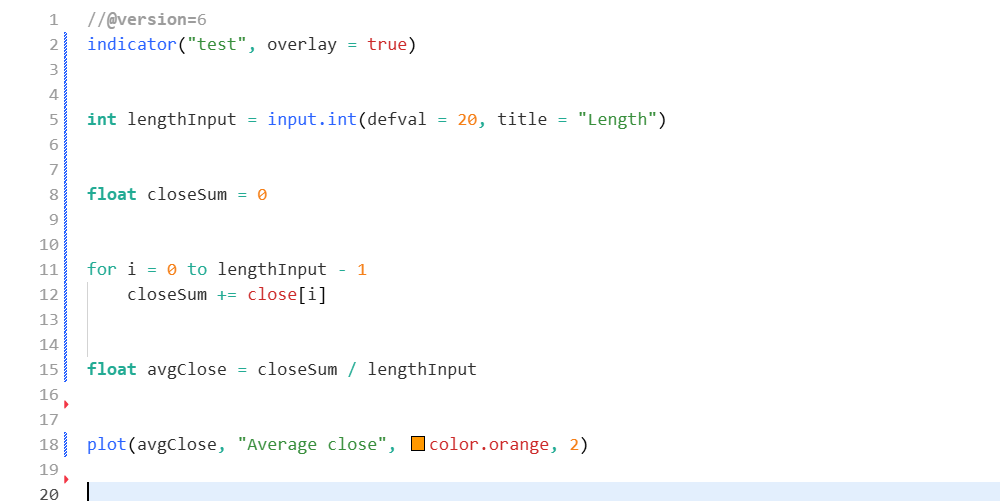近日,中美经贸政策变化再度引发市场高度关注。但桥水基金创始人达利欧指出,真正主导市场方向的并非关税本身,而是全球金融系统中更深层的结构性变量。他强调,全球债务周期、货币政策非对称、技术与资本重组,才是决定未来十年资产定价逻辑的“真正力量”。本文将围绕这四大系统变量,结合黄金、汇率、原油与股市表现,梳理2025年当下值得关注的核心风险与配置逻辑。一、结构性压力积聚:政策调整只是表象4月9日,美国总统特朗普宣布对中国出口商品实施新的加征措施,整体税负提升显著。随后,中国国务院关税税则委员会宣布对原产于美国的全部进口商品在现有关税基础上加征50%关税。来自央视新闻与参考消息的报道显示,此举意在回应前期不对等行为,并维护国内产业安全。然而,桥水基金创始人雷·达利欧强调:“经贸摩擦只是表象,真正主导市场结构的,是全球系统性失衡的深层变量。”全球当前正面临三大核心结构错配:• 债务结构恶化:国际金融协会(IIF)数据显示,2023年全球债务总额已突破307万亿美元,多个主要经济体债务/GDP比创新高;• 政策分裂放大波动:美国两党在贸易与财政政策上的分歧日益明显,美联储数据显示,高净值人群掌握财富比例持续上升,分配结构失衡;• 技术冲击改变产业逻辑:高盛预计,未来十年生成式AI将影响超过3亿个工作岗位,技术、资本与劳动力关系正在重构。上述力量的叠加,使得资本市场对宏观变量的敏感度持续提升,政策信号一旦出现边际变化,资产波动往往随之加剧。达利欧在近期演讲中指出,当市场因关税而剧烈波动时,更应关注背后的“隐性变量”——即结构性债务失衡与地缘资本割裂正在形成系统性风险土壤,而政策只是表象。“在波动中寻找本质,是宏观投资者最重要的能力。”二、避险资产表现分化:风险偏好结构重估黄金:高位震荡中具备配置价值受宏观不确定性、避险情绪与全球央行购金共振影响,黄金在4月中旬突破每盎司3240美元的历史新高,随后震荡至3236美元附近。技术面显示,3000美元下方支撑较强,3200美元构成关键阻力。中期来看,若美联储进入降息窗口,黄金仍具备战略配置价值。日元:避险回流增强短期韧性美元指数短线下挫约3%,避险资金阶段性流向日元,推动美元兑日元汇率跌至120区间。日本央行削减长期债券购买,利差缩小强化了日元的阶段性支撑。不过,日元升值若过快仍可能引发干预预期,操作上宜轻仓防御为主。原油:结构性承压,短线反弹动能有限WTI油价自4月初以来持续回落,目前接近61.50美元/桶,布伦特价格回升至64.76美元。全球制造业疲弱、OPEC产量预期不稳、能源结构转型加快,均构成油价反弹压力。市场普遍认为短期存在波段修复可能,但趋势性反转尚需基本面支持。股市:情绪波动加剧,结构分化显现在全球经济和政策不确定性背景下,美国股市近期呈现出较大波动。部分科技股此前曾出现明显回调,但近日强劲反弹:4月11日纳指上涨2.06%,标普涨幅1.81%。这反映出部分领先企业凭借长期基本面优势正在吸引资金回流。• 领先科技股:虽然经历短期调整,但长期来看,这些公司依然具备技术创新和盈利成长优势。近期反弹显示市场对其未来走势的信心修复。• 其他板块:受宏观经济和政策分歧影响,部分传统板块依然表现疲软,波动性较高。总体而言,尽管短期内美国股市整体情绪存在波动,但部分领先科技公司的基本面依旧强劲,市场对其未来预期仍较乐观。投资者在关注整体走势的同时,应重点注意板块分化及个股基本面的变化,灵活应对短期波动与长期投资机会。在估值与盈利能力重新平衡的过程中,指数走势将更加震荡,建议投资者降低对大盘趋势的依赖,转向布局高现金流、政策支持明确、与内需相关的结构性板块。例如:基础设施数字化、能源设备制造、部分海外收入占比较高的出海企业。三、全球政策与市场预期重估中美关税博弈在4月中旬再度升级,但局部出现了短暂的缓和迹象。中方明确表态“将视美方行动而定”,保留对话窗口;美方则在实施125%“对等关税”的同时,于4月11日临时宣布豁免智能手机、笔记本电脑、路由器等20余类消费电子产品的关税。这一举措由美国海关与边境保护局(CBP)发布公告确认,被外界解读为应对国内通胀和消费压力的策略性回调,也成为当前局势下极少数的“温和信号”。然而,豁免之外,更强硬的政策也在同步推进:白宫已启动针对半导体、关键芯片、存储设备和高性能计算设备的国家安全调查,预计将在未来30~60天内公布一批以“保障供应链”为名义的新关税措施,或对现有豁免产品重新施压。这意味着,尽管部分产品暂时从高税率清单中撤下,但高科技领域面临的系统性壁垒反而正在筑高,中长期政策方向仍偏向收紧。中方则以等比反制方式,将对美商品关税水平同步提高至125%,并公开表示“对零和游戏不抱幻想”。与此同时,全球宏观数据持续释放疲弱信号:• 多国制造业PMI重回荣枯线下方;• 美国失业率升至4.2%;• 高盛下调标普500指数年内目标,IMF则发布全球增长预警。在此背景下,市场对主要央行“提前降息”预期升温,资产价格的未来方向将更多由流动性重估而非单一事件推动。这场由关税触发的连锁反应,正在验证达利欧长期以来的判断——全球已步入“结构错配与再均衡”的深周期阶段。贸易政策只是显性变量,真正影响未来定价框架的,是结构性债务、资本流向与全球产业链的再编排。四、资产配置建议:结构变化下的风险锚定面对大周期演化与政策转折重叠,建议投资者从结构与宏观角度出发,构建更具弹性与防御性的资产组合:• 黄金方面,避险属性与政策预期双支撑,使其在回调后具备较好性价比。建议关注2950–3000美元区域的分批布局机会;• 日元短期受益于避险资金流入与利差收窄,具备一定策略性价值。建议轻仓、短期参与;• 原油短期技术上超跌,但整体结构偏空不改,建议仅在库存数据或政策明确支持下进行波段型配置;• 股市方面,受估值高位与盈利预期下行双压,整体方向性不强。建议降低对指数的集中暴露,转向现金流稳健、估值合理、受益政策预期的行业,如高端制造、数字基建与出海平台。五、结语:越是波动,越需理解大逻辑达利欧所提出的“结构优先”理念提醒我们:投资不能只看表面现象,更应洞察驱动变化的底层力量。当前全球正在经历经济模式、政策逻辑与技术结构的深度重组,只有回归宏观判断,才能在震荡中找准方向。参考资料• 国际金融协会(IIF)《2023全球债务统计报告》• 美联储FRED数据库《家庭财富结构数据》• 高盛《AI与全球就业结构变化研究》• 新华社、央视新闻关于中美关税声明全文• 彭博社、路透社、IMF关于市场解读的最新报道• Eastmoney证券时报,美国宣布部分商品免征“对等关税”• 半岛电视台中文网,特朗普政府豁免智能手机和电脑等产品对等关税• 金杜律所,美国对华一系列关税新政影响及应对初探联系方式:墨尔本 03 8658 0603悉尼 02 9188 0418中国地区(中文) 400 120 8537中国地区(英文) +248 4 671 903作者:Kara Yang | GO Markets 悉尼中文部
全球动荡不止关税,达利欧提醒关注更深层的系统挑战

Related Articles
.jpg)
一、全球及澳大利亚金融状况概览:
在本次会议上,委员们回顾了全球及澳大利亚的金融状况。近期全球科技股估值过高引发市场波动,股票价格一度下跌后反弹,美国市场受预期宽松货币政策支撑,而澳大利亚股市下跌持续更久,反映市场对现金利率上升和部分板块估值调整。全球债市利差仍低,但部分国家公司债收益率上升。利率预期方面,美联储预计降息并延续宽松,欧洲央行维持利率,加拿大、新西兰、瑞典和澳大利亚可能上调,日本则在通胀压力下逐步加息。澳大利亚短期债券收益率上升,但澳元仅小幅升值,缓解金融紧缩压力。国内方面,抵押贷款支出高企,家庭储蓄率维持高位,信贷需求回升,企业债务占GDP比重恢复至疫情前水平,显示金融状况喜忧参半。
二、经济增长与通胀趋势:
委员们对国内经济增长与通胀趋势进行了评估。10月年度CPI升至3.8%,部分因电费补贴停止,新房成本、市场服务、耐用品及国内旅行价格均高于预期,短期通胀前景上行风险增加,但数据波动性较大,需继续观察。劳动力市场方面,失业率上升趋势已在10月得到控制,其他未充分利用劳动力指标维持低水平,企业招聘仍有困难,但工资价格指数总体稳定,公共部门工资增长抵消私营部门放缓,整体略显紧张。经济增长方面,截至9月季度GDP增速接近潜在水平,私人需求增长强劲,数据中心和住房投资为主要动力,宽松政策效果预计在2026年显现。产出缺口为正,NAB产能利用率指标显示产能约束高于历史平均水平,表明经济存在一定需求过剩。
三、货币政策考量与决策
在政策讨论中,委员们重点关注三方面:总需求略高于潜在供给,通胀风险上升但持续性仍不明;私人需求复苏将支撑劳动力需求,经济增长动力依然存在;金融环境信号分化,部分委员认为不再紧缩,部分认为仍略紧,需观察债券收益率及利率上升影响。近期CPI及成本端指标显示通胀压力上行,但短期内过度推断趋势存在风险。若通胀持续上行,未来一年可能需加息,但仍需评估金融环境和市场利率对经济的作用。本次会议决定维持现金利率目标3.60%不变,并强调将持续密切关注数据变化及经济前景,在未来会议评估政策调整必要性。董事会重申其使命,致力实现价格稳定和充分就业,并将采取一切必要措施达成目标。
总结:
本次RBA会议表示,金融状况信号分化,利率上升与汇率变动影响尚未完全显现;通胀压力上行但短期持续性不明;劳动力市场略紧,私人需求复苏支撑经济。政策暂按兵不动,未来可能加息,重点关注2026年初通胀数据及金融市场动态。
.jpg)
TradingView编程系列5:循环结构(上)
循环(Loops) 是一种结构,它会根据指定的条件反复执行一段语句块。它们允许脚本在不需要重复编写代码的情况下完成重复性的任务。Pine Script提供了三种不同的循环类型:for、while 和 for…in。
一、隐式循环
Pine Script的执行模型和时间序列结构,使得在许多情况下并不需要写出明显的循环。
当用户将一个 Pine 脚本添加到图表中时,脚本会在一个等同于“大循环”的环境中运行:它会在可用数据中的每一根历史 K 线以及每一个实时 tick 上各执行一次代码。脚本可以通过历史引用运算符(history-referencing operator)访问之前 K 线上的执行结果;而通过使用 var 或 varip 关键字声明的变量,其计算结果可以在多次执行之间保持不变。这些特性使脚本能够通过逐 K 线(bar-by-bar)的计算来完成各种任务,而无需依赖显式的循环。
下面我们来看一个简单的示例,说明在 Pine Script 中不必要地使用循环的情况。

下面按逐行解释这段 Pine Script 代码的含义和执行逻辑:
首先,声明这是一个指标脚本(indicator)。test是指标在图表上显示的名称。overlay = true 表示该指标绘制在主价格图表上。
其次,声明一个整数类型变量名为lengthInput的变量。input.int()为创建一个用户可在参数设置中修改的整数输入项,其中默认值为 20 根 K 线。在参数面板中显示的名称为length。
接下来,再声明一个初始化变量为 0,浮点数类型的变量closeSum。注意,由于没有使用 var 关键字,在每一根 K 线上脚本执行时,closeSum 都会被重新置为 0。
然后进入for循环,对最近的 lengthInput 根 K 线进行循环,将每根 K 线的收盘价累加到 closeSum。在循环体中,把最近 lengthInput 根 K 线的收盘价逐一相加。
再之后,用收盘价总和除以 K 线数量,计算平均值,保存到变量avgClose中。
最后,将数据画成线,其中"Average close"为图例名称,线条颜色为橙色,线条宽度为2。
总结来说,这段代码就是用for循环计算并绘制最近 lengthInput 根 K 线的收盘价平均值。
其实,这个示例的重点在于演示 “不必要的循环”,在 Pine Script 中,这种均值计算可以直接使用内置函数ta.sma,例如:
avgClose = ta.sma(close, lengthInput)
二、显性循环
尽管 Pine 的执行模型、时间序列结构以及可用的内置函数在许多情况下都能消除对循环的需求,但并非所有迭代任务都可以不用循环。在以下几类任务中,循环是必不可少的:
- 遍历或操作集合(如数组、矩阵和映射)
- 执行无法通过无循环表达式或现有内置函数完成的计算
- 回溯历史数据以分析过去的 K 线,而比较所需的参考值仅在当前 K 线上才可用
例如,要判断哪些过去的 K 线的最高价(high)高于当前 K 线的最高价,就必须使用循环。
这是因为:当前 K 线的数值在脚本运行于之前的历史 K 线时是无法获取的。脚本只能在执行到当前 K 线时访问该 K 线的数值,并且必须在这次执行过程中向后回溯历史序列,将之前的数值与当前值进行比较。
例如,下面的脚本使用 for 循环,将之前 lengthInput 根 K 线的最高价与最后一根历史 K 线的最高价进行比较。在循环中,它调用 label.new(),在每一根最高价高于最后一根历史 K 线最高价的过去 K 线上方绘制一个圆形标签:

首先,声明这是一个名为test2的指标脚本。此脚本允许最多绘制 500 个label,否则在绘制大量标签时会触发限制错误。然后设置lengthInput变量,该变量表示要拿多少根过去的 K 线的最高价(high),来和最后一根历史 K 线的最高价比较,1和500为允许输入的最小值和最大值。
接下来,判断当前是否是最后一根已确认的历史 K 线。barstate.islastconfirmedhistory在历史数据的最后一根 K 线时返回 true,在实时 K 线或更早的历史 K 线上返回 false。
在最后一根历史K线的最高价位置画一条水平虚线。其中line.new的前四个参数分别为起点横坐标,起点纵坐标,终点横坐标,终点纵坐标。
接下来进入For循环,首先判断过去某根 K 线的最高价 > 当前(最后历史)K 线的最高价,如果高于,则紫色圆形标签自动绘制在 K 线柱的上方。
最后一行代码,使用三元运算符判断给最后一根历史 K 线上色高亮。如果是最后一根历史 K 线,则为橙色,否则不改变颜色。

可以看到,当我们将长度参数设置为 60 后,图表中会在最高价高于当前 K 线最高价的历史 K 线上方显示紫色圆点,同时还会绘制一条表示当前 K 线最高价的水平虚线,用于直观地标示该参考价位。
综上所述,本文通过示例对比说明了 Pine Script 中“不必要循环”和“必须使用循环”的典型场景。合理理解 Pine 的执行模型,优先使用内置函数,可以提升脚本的简洁性与性能;而在需要基于当前 K 线回溯并分析历史数据时,循环则不可或缺。掌握循环的正确使用方式,有助于编写更高效、清晰且功能强大的 Pine Script 脚本。
.jpg)
如果你在两年前买入任何一只铀矿股,大概率都赚到了钱。那时候是“风口来了猪都会飞”,只要沾上“核能”两个字,股价就跟着铀价一起涨。但站在2025年底,那种“闭眼买、随便涨”的好日子结束了。
2026年,铀矿投资将进入一个新的阶段——“拼内功”的阶段。有些公司会因为手里有真矿而一飞冲天,而有些只会讲故事的公司将会原形毕露。
最近发生了两件大事,一喜一忧。
第一件事:印度的“核能大门”终于开了(这是超级利好)
以前,全世界最大的核能市场是中国和欧美。但就在昨天,印度通过了一个叫《SHANTI法案》的新法律。简单说,这就像是给印度的核能市场松了绑。以前印度搞核电只能国家自己弄,效率低、资金少;现在法律允许塔塔、阿达尼这些印度财阀巨头进场,也允许外国技术进来。印度计划在未来20年把核电规模扩大10倍。
这对铀价意味着什么?意味着除了微软、亚马逊这些搞AI需要电力的科技巨头在抢铀,现在又多了一个拥有14亿人口的超级大买家。需求端简直是火上浇油。
第二件事:澳洲矿企Boss Energy暴雷(这是血的教训)
既然需求这么好,为什么今天铀矿股没有集体狂欢?因为澳洲的一家明星公司——Boss Energy股价腰斩后又暴跌了20%多。
为什么暴跌?简单说就是:牛皮吹破了。这家公司以前告诉大家,他们的Honeymoon矿山很好挖,成本很低。结果今天他们不得不承认,地底下的矿石情况比预想的差很多,原来的开采方案行不通,之前的赚钱计划作废,一切得推倒重来。
这给所有投资者敲响了警钟:铀价再高,如果你挖不出来,或者挖矿成本太高,那也是白搭。
2026年,普通人该怎么买?
基于上面这一正一反两个消息,明年的策略非常简单:买那些真正能把矿挖出来、卖出去的好公司;远离那些只会画大饼、还没证明自己的公司。以下是对几只热门股票的解读:1. 最稳的“定海神针”:Cameco (CCJ)
- 它是什么: 加拿大的巨无霸,行业老大。
- 投资逻辑: 如果你不想担惊受怕,买它就对了。它不仅有世界上最好的矿,还收购了西屋电气(造核反应堆的)。不管谁建核电站,都要找它买燃料。虽然它最近也遇到一点小技术问题减产,但那是“感冒”,不像Boss Energy是“重伤”。
- 评价: 核心配置。
2. 最具爆发力的“皇储”:NexGen Energy (NXE)
- 它是什么: 还没开始挖,但手里握着一个“金矿”。
- 投资逻辑: 它在加拿大的那个矿,品位极高,就像地底下埋着印钞机。现在只要等加拿大政府最后盖个章(审批通过),它就能开工。按照现在的进度,2026年初很可能就有好消息。一旦获批,它的价值会重估。
- 评价: 值得,要等待好消息落地。
3. 美国的“投机之王”:UEC
- 它是什么: 美国本土公司,非常擅长资本运作。
- 投资逻辑: 这家公司很有意思,它不仅自己挖矿,还特别喜欢在铀价便宜的时候囤货。它现在的仓库里堆满了铀。如果明年铀价突然暴涨,它赚得最快最多。而且它有“美国制造”的光环,美国政府现在很支持本土矿企。
- 评价: 有点激进,博取的短期暴涨。
4. 甚至有点危险的:Boss Energy (BOE)
- 它是什么: 刚刚暴雷的澳洲公司。
- 投资逻辑: 就像我前面说的,它承认了地质问题。解决这些问题可能需要一年甚至更久,而且不一定能解决好。
- 评价: 坚决不碰。 哪怕它跌了很多看起来很便宜,也不要去接“飞下来的刀子”。
5. 值得观察的:Paladin (PDN) 和 Deep Yellow (DYL)
- Paladin (PDN): 它已经开始生产了,比Boss Energy强。但最近为了还债在调整财务结构,加上成本控制还需要观察。属于“比上不足,比下有余”。
- Deep Yellow (DYL): 这是家好公司,老板是行业老兵,非常稳健。看到Boss Energy翻车,他们很聪明地推迟了做决定的时间,一定要把账算清楚再开工。这种谨慎在现在很难得,现在的价格是被错杀了,值得关注。
总结2026年的铀市场,不再是大家一起发财的宴席,而是一场“淘汰赛”。核能复兴的大趋势没有任何问题,印度的入局更是加了一把火。但是,地下的矿石不会骗人。作为投资者,我们要把钱投给那些确定性最高的公司(如Cameco、NexGen),而不是去赌那些看起来便宜但风险巨大的“故事股”。记住一句话:在牛市的下半场,安全比暴利更重要。
Recent Articles
.jpg)
一、全球及澳大利亚金融状况概览:
在本次会议上,委员们回顾了全球及澳大利亚的金融状况。近期全球科技股估值过高引发市场波动,股票价格一度下跌后反弹,美国市场受预期宽松货币政策支撑,而澳大利亚股市下跌持续更久,反映市场对现金利率上升和部分板块估值调整。全球债市利差仍低,但部分国家公司债收益率上升。利率预期方面,美联储预计降息并延续宽松,欧洲央行维持利率,加拿大、新西兰、瑞典和澳大利亚可能上调,日本则在通胀压力下逐步加息。澳大利亚短期债券收益率上升,但澳元仅小幅升值,缓解金融紧缩压力。国内方面,抵押贷款支出高企,家庭储蓄率维持高位,信贷需求回升,企业债务占GDP比重恢复至疫情前水平,显示金融状况喜忧参半。
二、经济增长与通胀趋势:
委员们对国内经济增长与通胀趋势进行了评估。10月年度CPI升至3.8%,部分因电费补贴停止,新房成本、市场服务、耐用品及国内旅行价格均高于预期,短期通胀前景上行风险增加,但数据波动性较大,需继续观察。劳动力市场方面,失业率上升趋势已在10月得到控制,其他未充分利用劳动力指标维持低水平,企业招聘仍有困难,但工资价格指数总体稳定,公共部门工资增长抵消私营部门放缓,整体略显紧张。经济增长方面,截至9月季度GDP增速接近潜在水平,私人需求增长强劲,数据中心和住房投资为主要动力,宽松政策效果预计在2026年显现。产出缺口为正,NAB产能利用率指标显示产能约束高于历史平均水平,表明经济存在一定需求过剩。
三、货币政策考量与决策
在政策讨论中,委员们重点关注三方面:总需求略高于潜在供给,通胀风险上升但持续性仍不明;私人需求复苏将支撑劳动力需求,经济增长动力依然存在;金融环境信号分化,部分委员认为不再紧缩,部分认为仍略紧,需观察债券收益率及利率上升影响。近期CPI及成本端指标显示通胀压力上行,但短期内过度推断趋势存在风险。若通胀持续上行,未来一年可能需加息,但仍需评估金融环境和市场利率对经济的作用。本次会议决定维持现金利率目标3.60%不变,并强调将持续密切关注数据变化及经济前景,在未来会议评估政策调整必要性。董事会重申其使命,致力实现价格稳定和充分就业,并将采取一切必要措施达成目标。
总结:
本次RBA会议表示,金融状况信号分化,利率上升与汇率变动影响尚未完全显现;通胀压力上行但短期持续性不明;劳动力市场略紧,私人需求复苏支撑经济。政策暂按兵不动,未来可能加息,重点关注2026年初通胀数据及金融市场动态。
.jpg)
TradingView编程系列5:循环结构(上)
循环(Loops) 是一种结构,它会根据指定的条件反复执行一段语句块。它们允许脚本在不需要重复编写代码的情况下完成重复性的任务。Pine Script提供了三种不同的循环类型:for、while 和 for…in。
一、隐式循环
Pine Script的执行模型和时间序列结构,使得在许多情况下并不需要写出明显的循环。
当用户将一个 Pine 脚本添加到图表中时,脚本会在一个等同于“大循环”的环境中运行:它会在可用数据中的每一根历史 K 线以及每一个实时 tick 上各执行一次代码。脚本可以通过历史引用运算符(history-referencing operator)访问之前 K 线上的执行结果;而通过使用 var 或 varip 关键字声明的变量,其计算结果可以在多次执行之间保持不变。这些特性使脚本能够通过逐 K 线(bar-by-bar)的计算来完成各种任务,而无需依赖显式的循环。
下面我们来看一个简单的示例,说明在 Pine Script 中不必要地使用循环的情况。

下面按逐行解释这段 Pine Script 代码的含义和执行逻辑:
首先,声明这是一个指标脚本(indicator)。test是指标在图表上显示的名称。overlay = true 表示该指标绘制在主价格图表上。
其次,声明一个整数类型变量名为lengthInput的变量。input.int()为创建一个用户可在参数设置中修改的整数输入项,其中默认值为 20 根 K 线。在参数面板中显示的名称为length。
接下来,再声明一个初始化变量为 0,浮点数类型的变量closeSum。注意,由于没有使用 var 关键字,在每一根 K 线上脚本执行时,closeSum 都会被重新置为 0。
然后进入for循环,对最近的 lengthInput 根 K 线进行循环,将每根 K 线的收盘价累加到 closeSum。在循环体中,把最近 lengthInput 根 K 线的收盘价逐一相加。
再之后,用收盘价总和除以 K 线数量,计算平均值,保存到变量avgClose中。
最后,将数据画成线,其中"Average close"为图例名称,线条颜色为橙色,线条宽度为2。
总结来说,这段代码就是用for循环计算并绘制最近 lengthInput 根 K 线的收盘价平均值。
其实,这个示例的重点在于演示 “不必要的循环”,在 Pine Script 中,这种均值计算可以直接使用内置函数ta.sma,例如:
avgClose = ta.sma(close, lengthInput)
二、显性循环
尽管 Pine 的执行模型、时间序列结构以及可用的内置函数在许多情况下都能消除对循环的需求,但并非所有迭代任务都可以不用循环。在以下几类任务中,循环是必不可少的:
- 遍历或操作集合(如数组、矩阵和映射)
- 执行无法通过无循环表达式或现有内置函数完成的计算
- 回溯历史数据以分析过去的 K 线,而比较所需的参考值仅在当前 K 线上才可用
例如,要判断哪些过去的 K 线的最高价(high)高于当前 K 线的最高价,就必须使用循环。
这是因为:当前 K 线的数值在脚本运行于之前的历史 K 线时是无法获取的。脚本只能在执行到当前 K 线时访问该 K 线的数值,并且必须在这次执行过程中向后回溯历史序列,将之前的数值与当前值进行比较。
例如,下面的脚本使用 for 循环,将之前 lengthInput 根 K 线的最高价与最后一根历史 K 线的最高价进行比较。在循环中,它调用 label.new(),在每一根最高价高于最后一根历史 K 线最高价的过去 K 线上方绘制一个圆形标签:

首先,声明这是一个名为test2的指标脚本。此脚本允许最多绘制 500 个label,否则在绘制大量标签时会触发限制错误。然后设置lengthInput变量,该变量表示要拿多少根过去的 K 线的最高价(high),来和最后一根历史 K 线的最高价比较,1和500为允许输入的最小值和最大值。
接下来,判断当前是否是最后一根已确认的历史 K 线。barstate.islastconfirmedhistory在历史数据的最后一根 K 线时返回 true,在实时 K 线或更早的历史 K 线上返回 false。
在最后一根历史K线的最高价位置画一条水平虚线。其中line.new的前四个参数分别为起点横坐标,起点纵坐标,终点横坐标,终点纵坐标。
接下来进入For循环,首先判断过去某根 K 线的最高价 > 当前(最后历史)K 线的最高价,如果高于,则紫色圆形标签自动绘制在 K 线柱的上方。
最后一行代码,使用三元运算符判断给最后一根历史 K 线上色高亮。如果是最后一根历史 K 线,则为橙色,否则不改变颜色。

可以看到,当我们将长度参数设置为 60 后,图表中会在最高价高于当前 K 线最高价的历史 K 线上方显示紫色圆点,同时还会绘制一条表示当前 K 线最高价的水平虚线,用于直观地标示该参考价位。
综上所述,本文通过示例对比说明了 Pine Script 中“不必要循环”和“必须使用循环”的典型场景。合理理解 Pine 的执行模型,优先使用内置函数,可以提升脚本的简洁性与性能;而在需要基于当前 K 线回溯并分析历史数据时,循环则不可或缺。掌握循环的正确使用方式,有助于编写更高效、清晰且功能强大的 Pine Script 脚本。

What moved the ASX 200 in 2025?
In 2025, the ASX 200 closed around 8,621 points and was up approximately 6% year to date (YTD) as of 19 December close. Market direction was most sensitive to Reserve Bank of Australia (RBA) expectations, commodity prices and China-linked demand, and (to a lesser extent) moves in the Australian dollar (AUD). The index recovered from November’s pullback, but remained below October’s record close.
Key 2025 drivers included:
- RBA policy expectations: Sentiment was shaped by shifting views on the timing and extent of rate moves. The November pullback reflected repricing towards a longer pause and higher uncertainty around whether the next move could be a hike rather than a cut, particularly as jobs and inflation data surprised.
- Resources and China sensitivity: With a meaningful resources weight, the index responded to iron ore stability, strong gold prices and relative firmness in base metals. China data and any perceived policy support (including signals from the People’s Bank of China (PBOC)) remained important for the export backdrop. A relatively stable AUD also reduced currency-related noise for exporters.
- Index composition and market structure: The ASX 200’s heavier tilt to materials and banks, and lower exposure to high-growth technology, meant it often lagged tech-led global rallies, but tended to hold up better when AI and growth valuations were questioned.
- Corporate earnings: Reporting season outcomes influenced valuation support. In September’s half-year reporting season, around 33% of ASX 200 companies beat expectations, which helped underpin pricing around current levels.
Current state
The ASX 200 was roughly 5% below its late-October record high close of 9,094 points. After the November retracement, support around 8,400 appeared to hold and buying interest improved. The 50-day EMA near 8,730 (a prior consolidation area) was a commonly watched near-term reference, noting technical indicators can be unreliable.
What to watch in January
- China and commodity demand: Growth, trade and any fresh stimulus inference from the PBOC may affect sentiment.
- Domestic inflation and labour data: CPI and jobs prints are key inputs into RBA expectations.
- Key levels and follow-through: The post-November rebound may need continued demand to sustain momentum.

What moved the Nikkei 225 in 2025?
In 2025, the Nikkei 225 traded around 39,200 points and was up approximately 21% year to date (YTD). Market direction was most sensitive to moves in the Japanese yen (JPY) and Bank of Japan (BOJ) communication, with the index consolidating after multi-decade highs. While broader signals remained constructive, consolidation can resolve either higher or lower.
Key influences included:
- JPY movements and earnings translation: A weaker JPY can boost the reported value of overseas earnings for some exporters, although it may also increase input and import costs. The net impact often depends on company hedging practices and varies by sector, with effects most evident in export-heavy industries such as automotive, industrials and parts of technology manufacturing.
- Gradual BOJ policy transition: The BOJ continued to step away from ultra-easy settings, but tightening was generally cautious. Markets largely priced a slow, conditional normalisation, which helped limit downside, even as policy headlines created bouts of volatility.
- Corporate governance reforms: Ongoing improvements in capital efficiency and shareholder returns supported interest from overseas investors. Share buybacks, stronger balance-sheet discipline and improved return on equity (ROE) contributed to re-rating in parts of the market.
- Global cyclical exposure: The Nikkei moved with shifts in global manufacturing sentiment and expectations for US growth, particularly during risk-on phases associated with AI-related capital spending.
Current state
After pushing to multi-decade highs earlier in the year, the Nikkei spent time consolidating but has remained structurally strong. Price sits above key long-term moving averages, and some technicians watch the 50-day exponential moving average (EMA) as a potential reference level (noting these indicators can be unreliable). Currency swings and shifting BOJ expectations were commonly cited as contributors to much of the second-half volatility, although pullbacks were generally met with buying interest.
What to watch in January for Japan
- JPY volatility: Sharper yen moves, especially if driven by BOJ or Federal Reserve expectations, could quickly change exporter earnings assumptions.
- BOJ communication: Small changes in language on inflation persistence or bond market operations may move sentiment.
- Global growth data: US and China manufacturing and trade prints remain key inputs for an externally focused economy.



